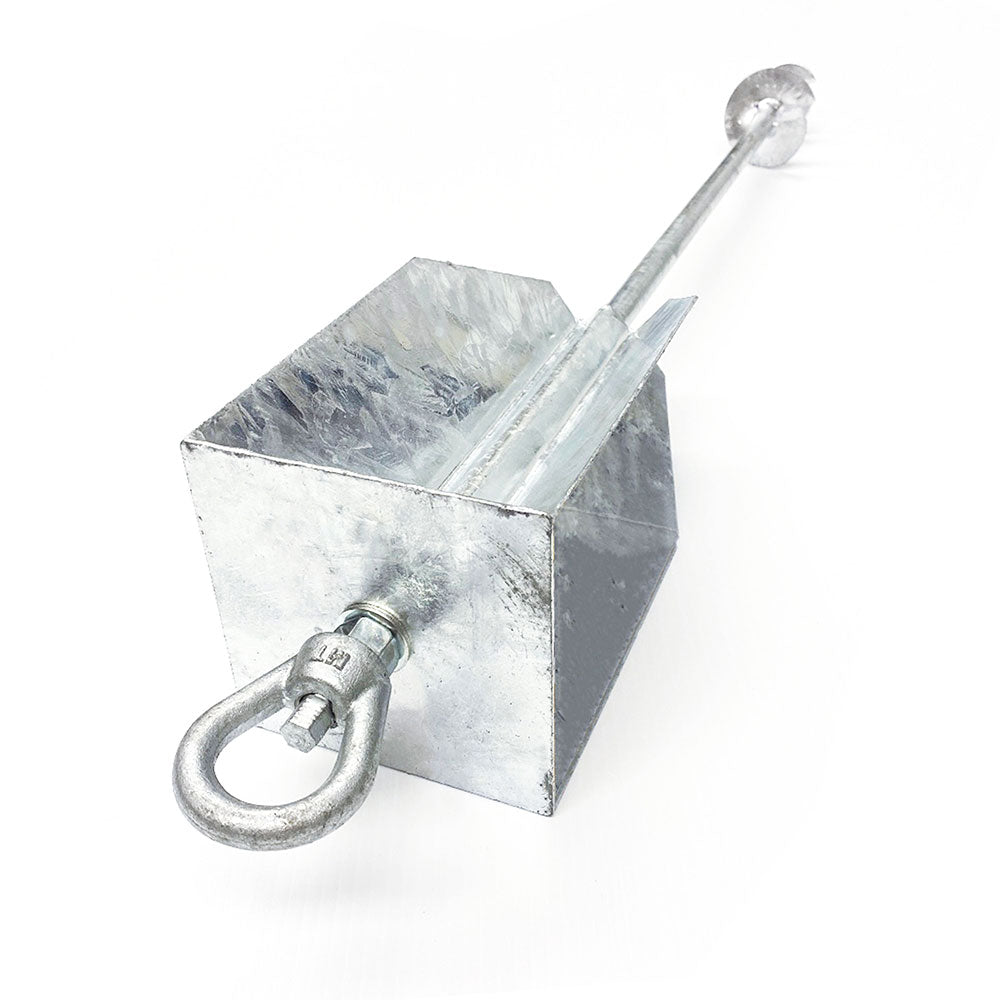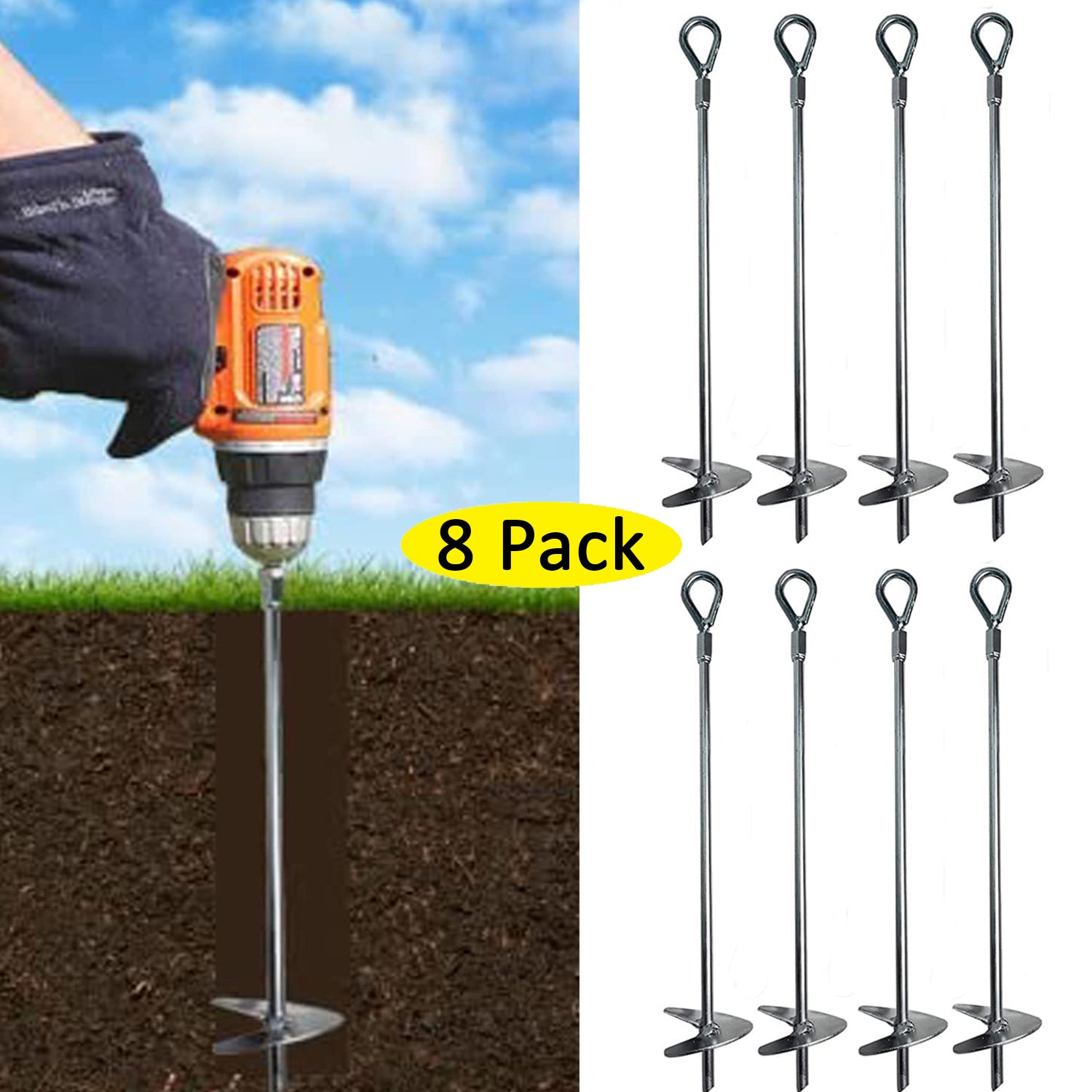Frequent Errors When Using a Ground Anchor for Security
Frequent Errors When Using a Ground Anchor for Security
Blog Article
Check Out the Different Kinds of Ground Anchor for Your Following Task
When beginning on a building or landscaping project, understanding the numerous sorts of ground supports offered is essential to making sure both security and resilience (Ground Anchor). From auger anchors, which master varied dirt conditions, to stake supports developed for short-lived setups, the options are various. Additionally, concrete and screw supports existing distinct advantages in details circumstances, while deadman anchors are customized for applications requiring resistance to lateral pressures. The selection of an ideal support kind can significantly affect the total success of your task, triggering further exploration right into their particular benefits and applications.

Auger Anchors
Auger anchors are a prominent selection in different construction and landscaping tasks because of their one-of-a-kind design and effective anchoring abilities. These anchors consist of a helical screw-like shaft that is driven right into the ground, permitting a safe and secure hold. The spiral style facilitates easy installment and makes best use of resistance against side forces, making auger anchors especially reliable in applications such as secure fencing, momentary frameworks, and disintegration control.
The installment process of auger supports is reasonably simple. Auger supports can be quickly gotten rid of and reused, which includes to their cost-effectiveness and sustainability.
Among the considerable benefits of auger anchors is their capability to disperse loads equally across the bordering dirt, reducing the danger of soil disruption and minimizing environmental influence. Furthermore, they are less vulnerable to loosening up or heaving gradually contrasted to typical anchoring methods. Subsequently, auger supports are an outstanding choice for projects calling for reliable and resilient anchoring services.

Stake Anchors
When it comes to protecting frameworks in a variety of outside applications, stake anchors use a trusted and simple remedy. These supports are commonly constructed from durable products such as steel or aluminum, made to stand up to environmental stresses while supplying optimal security. Their straightforward layout permits quick setup, making them a suitable choice for momentary or long-term anchoring requirements.
Stake supports are particularly useful in safeguarding tents, canopies, and other lightweight structures versus wind and weather. They function by being driven right into the ground at an angle, producing a strong hold that stands up to pull-out forces - Ground Anchor. The performance of risk supports depends upon several elements, including soil type, dampness content, and the angle of installment
For included safety, lots of stake anchors include attachment points for bands or ropes, enabling tension changes as necessary. In applications such as landscaping or building and construction, they can properly stabilize tools or structures on irregular surface. In general, risk supports give a versatile and economical option for securing various outside installments, making them a preferred choice for service providers and DIY enthusiasts alike.
Concrete Anchors
Concrete supports supply a durable remedy for protecting structures to concrete surfaces, guaranteeing security and safety and security in various applications. These supports are important for tasks ranging from property buildings to large-scale industrial installations. They come in different types, consisting of growth supports, adhesive supports, and undercut anchors, each designed for certain load needs and environmental problems.
When set up,Expansion anchors count on mechanical devices to grasp the concrete. They are optimal for tool to heavy-duty applications. Sticky anchors utilize high-strength epoxy or resin to bond the support to the concrete, offering exceptional load-bearing capacities, specifically in cracked concrete scenarios. Undercut anchors create an one-of-a-kind shape within the concrete, offering extraordinary holding power, specifically in applications where tensile tons are prevalent.
Choosing the ideal concrete anchor involves thinking about navigate to these guys factors such as the weight of the tons, the condition of the concrete, and ecological conditions. Proper installation techniques are vital to ensure optimal performance and dependability. When implemented correctly, concrete supports significantly boost the architectural integrity of various site web jobs, making them important in modern-day building and construction practices. Understanding the details requirements of your job will help in selecting the best kind of concrete anchor for the job.
Screw Anchors

Screw supports are a versatile attaching solution that can be successfully used in a variety of applications where typical concrete supports might not be sufficient. These anchors consist of a helical layout that allows them to be easily driven right into the ground, making them optimal for use in soil and other substratums. Their special structure provides exceptional holding power and resistance to pull-out pressures, making them suitable for various jobs, from landscaping to structural support.
One of the main advantages of screw anchors is their convenience of installation. They call for marginal tools and can usually be installed without the requirement for excavation, which saves both time and labor expenses. Additionally, screw anchors can be gotten rid of and reused, offering a sustainable service for momentary applications.
Screw supports are particularly useful in areas where soil problems are challenging, such as sandy or loosened dirts. Their capacity to be mounted at varying midsts allows for modification based upon certain project demands. Generally, screw supports supply a reliable and reliable securing approach, making them an exceptional selection for designers and specialists seeking efficient solutions for their tasks.
Deadman Anchors
Deadman anchors offer as a durable remedy for stabilizing frameworks in tough problems, especially where conventional anchoring techniques may fail. These anchors include huge, heavy things buried underground, which produce resistance versus side pressures. The design typically entails a straight part, such as a block of concrete or a metal plate, hidden in the dirt, to which wires or straps are affixed.
The effectiveness of deadman supports hinges on their capacity to disperse loads over a bigger location, decreasing the risk of failure in unsteady dirt problems. They are especially advantageous in applications such as retaining walls, short-term frameworks, and slope stablizing, where dirt motion can jeopardize the integrity of the structure.
Setup of deadman anchors requires mindful preparation to ensure they are positioned at the correct depth and orientation, optimizing their load-bearing ability. While they may call for more labor and product than lightweight anchors, their dependability in negative problems makes them important for long-term tasks. Deadman anchors are versatile and can be adapted to different applications, making them a go-to selection for designers encountering distinct difficulties in their jobs.
Conclusion
In summary, selecting the ideal type of ground anchor is crucial for ensuring stability and safety in different jobs. Auger anchors master diverse dirt conditions, while stake supports fit short-lived applications. For concrete surface areas, development and glue supports supply have a peek at these guys reputable choices, and screw anchors use versatility in difficult surfaces. Deadman supports are particularly efficient in resisting side forces for retaining walls. Mindful factor to consider of these alternatives will certainly improve job results and structural stability.
Additionally, concrete and screw supports present special benefits in certain circumstances, while deadman supports are customized for applications calling for resistance to side pressures - Ground Anchor.Auger supports are a popular choice in numerous building and landscape design tasks due to their one-of-a-kind layout and efficient securing abilities. They come in different types, including expansion anchors, adhesive anchors, and undercut supports, each designed for specific tons requirements and environmental conditions
Adhesive supports make use of high-strength epoxy or material to bond the anchor to the concrete, providing premium load-bearing capabilities, specifically in split concrete circumstances. In general, screw anchors offer a reliable and reliable securing technique, making them an excellent option for designers and professionals seeking reliable services for their tasks.
Report this page